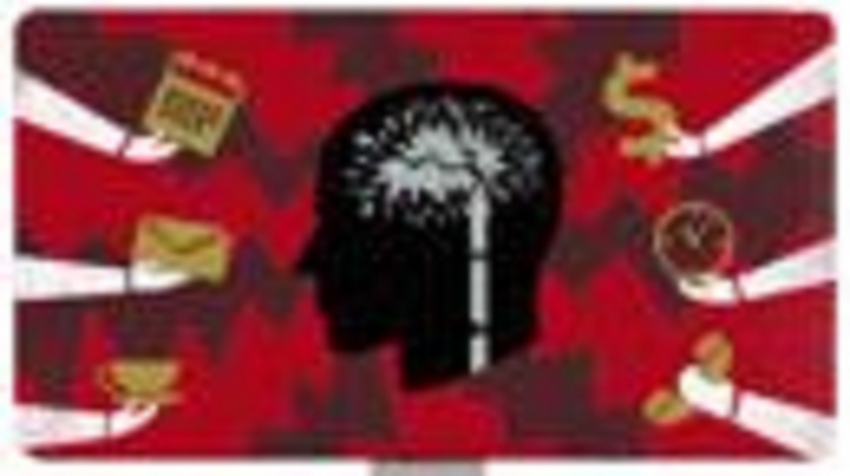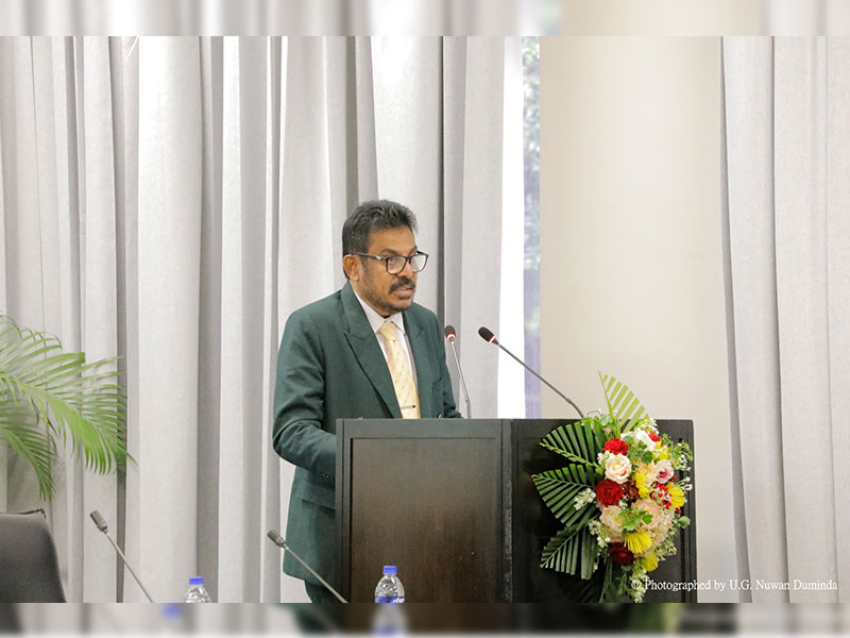Are we really more stressed than ever before? In an essay based on her recent book Stress-Proof, Mithu Storoni explains how modern life may have amplified our anxiety, and the best ways to reduce its impact on our bodies and minds
By Mithu Storoni
In November 2017, two eye surgeons from a hospital in Beirut reported an intriguing case of visual loss in a colleague. A specialist in the retina, the colleague had suddenly developed a patch of blurry vision in one eye just a day or two after an intensely stressful day in the operating room. This was not the first time it had happened. The surgeon had experienced four such episodes in just a year, each preceded by a stressful day of operating.
The retinal surgeon was diagnosed with central serous chorioretinopathy (CSCR). A small amount of fluid had collected beneath a tiny region of his retina, causing it to temporarily detach. The condition resolved after a few weeks, and a strict stress-management plan prevented another episode from happening again.
First described in 1866, CSCR has been tentatively linked to stress ever since World War Two, when several cases were reported in military personnel. Although subsequent research has associated CSCR with stress-related mechanistic pathways, it is often labelled “idiopathic” (arising from an unknown cause) if no trigger other than stress is found. Departing from convention, the surgeons labelled the condition “Operating Room CSCR” identifying stress as its cause.
Reflecting on what had made their colleague vulnerable to stress, the surgeons noted new surgical techniques made possible with better technology had stretched the physical limits of what a surgeon is able to do. While this progress had expanded the scope of surgery, operating at these limits placed immense mental strain on the surgeon.
You might also enjoy:
The dangerous downsides of perfectionism
What I learned testing my stress levels on social media
Why exhaustion and burnout are so common
In 1959, management pundit Peter Drucker had predicted a dramatic transition in the nature of work would take place 50 years later. He coined a term for this new kind of work, “knowledge work” and anticipated the change would involve a move from physical to mental effort. He later wrote the centre of gravity of work would shift to “the man who puts to work what he has between his ears rather than the skill of his hands”.
The evolution of eye surgery has validated some of Drucker’s predictions. As technology improves, it transmutes the physical skill of the surgeon’s hands into the mental skills of analysis and concentration.
The evolving nature of work demands less from the body and more from the mind – meaning the mind is becoming a greater victim of occupational hazards
An eye surgery operating room is to some degree a microcosm of today’s global workplace, where the evolving nature of work demands less from the body and more from the mind. Consequently, the mind is becoming a greater victim of occupational hazards.
According to the Health and Safety Executive (HSE) of the United Kingdom, stress, depression or anxiety accounted for 57% of all “sick days” in 2017/2018. The mind’s rising leverage over productivity is prompting interest in what might be impeding its performance. The focus has fallen on stress.
János Hugo Bruno "Hans" Selye a Canadian-Hungarian physician coined the first definition of “stress” in the 1930s. He borrowed the word from 17th Century English physicist Robert Hooke, whose Law of 1658 describes the relationship between physical stress on a material and its consequence, strain. Selye reportedly regretted using the word “stress” rather than “strain”, which left stress with a legacy of some ambiguity. It occupies a rare niche in the English language in meaning both the cause and the consequence – of itself.
The stress from being restrained for a few hours increased the number of “newborn” brain cells in a part of the rat’s brain
Research since Selye’s time has revealed an acute stress reaction is built upon a rich tapestry of processes. We know today that bungee jumpers become insulin resistant immediately following a bungee jump, and the stress of lecturing 200 students raises markers of inflammation in college professors. These processes offer a survival advantage under threat. The temporary insulin resistance, for instance, ensures sugar reaches a brain under duress, while inflammation holds a protective shield against unwelcome visitors entering through battle wounds.
The effects of a healthy, acute stress reaction are mostly temporary, ceasing when a stressful experience is over, and any lasting effects can sometimes leave us better than we were before. Studies on rats, for instance, found that the stress from being restrained for a few hours may increase the number of “newborn” brain cells in a part of the rat’s brain, which can correspond to better performance in certain kinds of memory tests.
Stress that is too frequent, too intense, however, or constantly present puts us under prolonged strain. Many of the players in the stress response have so-called “non-linear dose-dependent actions” meaning their effects change course with prolonged activity. As a result, chronic stress induces a gradual, persistent shift in psychological and physiological parameters that tips the scales towards disorder along different pathways.
The sympathetic and parasympathetic arms of the autonomic nervous system – a nerve network controlling involuntary processes such as blood pressure, breathing and digestion – play a pivotal role in orchestrating the acute stress response. During times of fear or anger, sympathetic activity (responsible for the “fight-or-flight” response) temporarily rises and parasympathetic activity (underlining “rest-and-digest” responses) falls. If this pattern of activity persists in the absence of stress, however, it can tilt us towards hypertension and other illnesses. Similarly, while temporary emotional reactivity in acute stress helps us predict danger, a sustained change in the dynamics of emotion regulation can tilt us towards mood disorders.
Structural change
Chronic stress is suspected of playing a role in the rising global burden of hypertension and type 2 diabetes, and pushes rats into major depression. Corroborating observations from animal studies and early human studies suggest chronic stress may even change the structure of the brain.
In the first study of its kind, Ivanka Savic and colleagues at Sweden’s Karolinska Institute and Stockholm University recently compared the brains of people suffering from work-related chronic stress to those of healthy, less stressed counterparts using structural magnetic resonance imaging techniques. They found a difference in regions active in attention allocation, decision-making, memory and emotion processing. In the stressed subjects, the prefrontal cortex appeared thinner, the amygdala appeared thicker and the caudate nucleus was smaller. The thinning in the prefrontal cortex correlated with worse emotion regulation.
A three month-long stress-rehabilitation program reversed thinning in the prefrontal cortex
To establish whether chronic stress was simply correlated to the changes or had caused the changes in the stressed individuals, the researchers scanned their brains again after a three month-long stress-rehabilitation program based on cognitive therapy and breathing exercises. The thinning in the prefrontal cortex was reversed. While the study had limitations (there was no “untreated stressed” control group), this reversal hinted at the possibility that chronic stress might have caused the thinning. Other studies have found that high circulating levels of the hormone cortisol correlates with worse memory and thinning in parts of the brain, even at a relatively young age.
These changes may partly be the consequence of the plastic nature of our brains, a manifestation of the brain’s extraordinary talent of adapting to whatever is demanded of it. In the middle of combat, for example, heightened emotional reactivity is a survival advantage, while higher cognitive functions become redundant. Recalibrating the brain’s baseline state to increase efficiency in this way can save a combat soldier’s life. In the setting of a workplace that relies on focus and complex decision-making, however, compromised emotion regulation and a decline in working memory will limit productivity. The change in the brain’s structure is maladaptive.
Chronic stress often strikes through a psychosocial route and is influenced by perception. While this makes the empirical study of chronic stress challenging, it also uncovers a potential path for managing chronic stress: one’s perceptual experience.
One example is the effect of rumination. Replaying the memory of a stressful experience after it is over can activate similar pathways in the brain as the actual experience. This can keep the stress reaction “switched on” even if a stressor is no longer there and cause the experience to be perceived as more distressing than it actually was. Preventing people from ruminating lowers their blood pressure faster after acute stress. Chronic stress has been linked to hypertension and in a small, randomised trial, US researchers, including Lynn Clemow at Columbia University Medical Center, used stress management training (based on a cognitive-behavioral group workshop) to effectively lower systolic blood pressure in patients with hypertension. The decline in pressure correlated with a decline in depressive rumination.
The perceptual element of stress may be the reason some mind-body interventions such as yoga, breathing techniques and focused-attention meditation can benefit stress management through effects on improving emotional regulation, reducing stress reactivity and speeding up recovery after stress. It may also explain why some techniques such as mindfulness meditation have shown mixed results in controlled studies. It is possible the technique of mindfulness meditation can invite rumination and repetitive negative thoughts in some individuals but not in others. Perceived stress can vary with genetic and epigenetic factors, individual traits, patterns of thought and behaviour, and the journey of one’s life so far.
Status and control
In some ways, the brain mimics a prediction machine that actively infers its environment to create a perceived representation of reality. A perception of uncertainty, unpredictability or a lack of control can signal there is a flaw in its model of reality and promote stress.
A practical demonstration of this theory lies in the way stress is moderated by social status. Having a high social status tempers your reaction to psychological stress, but if you think your social status might be challenged, having a lower social status may be better. This effect has been attributed to not feeling in control and may play a role in why competition, inequality and feeling judged can generate stress.
In a predictable world over which you have perfect control, a cause should lead to a predictable effect. A frequent mismatch between the effort you put in and the reward you receive for your effort frustrates this sense of perceived control. Consequently, an “effort-reward imbalance” is a source of chronic stress in the workplace. It is associated with a raised blood pressure in female Las Vegas hotel room cleaners, with burnout in police officers in Buffalo, New York, and with metabolic syndrome in fit, state police workers in Genoa, Italy. The effort of having to deal with a mismatch between effort and reward at work every day is emotionally exhausting and takes a toll on mental performance. In a study on Australian horse jockeys, experiencing high levels of effort-reward imbalance during times of intense stress correlated with an impairment in decision-making comparable to that associated with a blood alcohol concentration of 8%.
It’s not just the nature of our social interactions that could exacerbate stress. The impact of some facets of urbanised life on stress reactivity may have also been underestimated. An apparently “soft” factor like exposure to nature can hasten recovery following stress and lower markers of stress. Bright light or blue night exposure late in the evening from the use of LED screens can delay the release of the melatonin, a hormone that has been shown to reduce anxiety. Low-intensity exercise reduces circulating levels of cortisol, yet the need for frequent movement is often redundant.
Urbanisation is increasing the consumption of processed food and an ultra-processed diet has been linked to the incidence of depressive symptoms in at least two large cohorts. Our dietary habits modify the micro-organisms living in the digestive tract and these micro-organisms, through cross-talk with immune cells and other routes, can influence how the mind reacts to stress.
There is some evidence that modulating gut microbiota with specific foods or taking probiotics can help reduce symptoms of anxiety. Early results suggest taking either a single strain or a combination of probiotics may reduce mental fatigue and improve cognitive performance during stress – but not in the absence of stress.
In a 2015 exhibition at the Petit Palais in Paris, Belgian artist Thomas Lerooy presented a perceptive visual metaphor of mental stress in an exhibit aptly named “Not enough brain to survive”. The bronze sculpture depicted a classically beautiful body weighed down by a grotesquely enlarged, rather sad-looking head.
Unlike Lerooy’s piece, the human head does not expand and sink to the ground as its stress load grows heavier. Mental fatigue after a complex ophthalmic procedure is invisible. The surgeon does not gasp for air nor perspire. The picture painted by mental exhaustion is strikingly abstract compared to the well-recognised signs of physical exertion.
Mental strain is a performance-limiting factor in an age where physical load is increasingly converted into mental load. As we transition further into the information age, it is time for the enigma of chronic stress to finally move into the spotlight.



















